2014 Samsung Galaxy Note 10.1 Review
Tablets have always seemed like burdensome toys that offer no productive benefits that my small laptop and giant phone don’t already provide. Multitasking is limited, and onscreen typing is slow and inaccurate.
At the start of this semester I found a device that addressed these problems while promising extra functionality. I decided to purchase the 2014 Samsung Galaxy Note 10.1 in the hope that I might be able to leave my laptop at home.
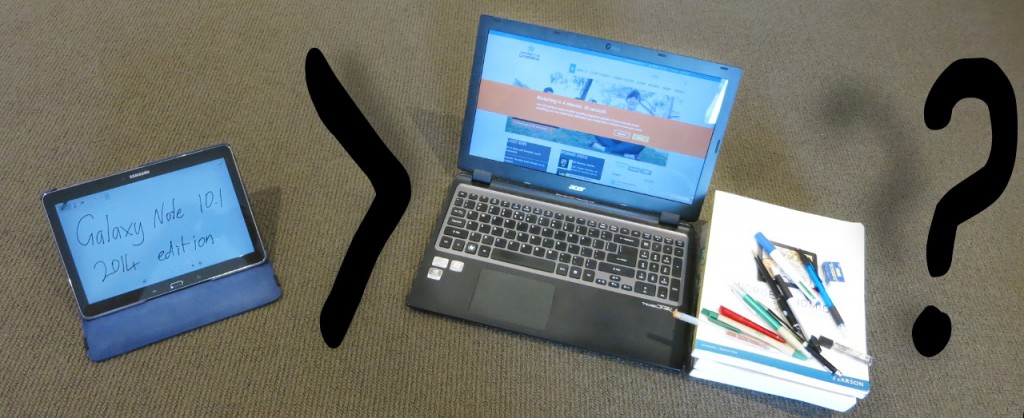
[fourcol_three]
S-Pen Stylus
The S-Pen is a special stylus that allows users to scrawl notes, circle, highlight and draw on PDFs, Powerpoint files, screen caps, images, or any other digital content. It is housed in the top corner of the tablet and integrates cleverly with the device. A shortcut menu is accessed easily using the S-Pen’s built-in button, allowing notes to be written down quickly without having to search for the right app. This is incredibly handy for capturing fleeting information like phone numbers or addresses, or jotting down ideas for complex projects, or pitches, complete with sketches and doodles.
Bottom up integration allows many things that other styluses and tablets can’t do. One of the most important of these is Palm rejection, which allows the Note to distinguish between stylus and palm/finger input so your hand can rest comfortably on the tablet while writing. The smooth glass surface of the tablet can make fine control difficult, but artistically gifted Note users are able to produce some pretty amazing art using the S-Pen.
In the early stages I lost annotations because some PDF or office software did not save them when I clicked ‘save’. I went through a number of apps before settling on LectureNotes which came highly recommended on the forums. It was designed with the S-Pen in mind and makes full use of its features. It uses layers, so lecture slides, textbooks, or handouts can go in a base layer, with annotations in separate layers above. It has a number of tools that are useful for students in different disciplines such as empty x-y axis graphs, tables, grids, arrows that can be put onto the page quickly and easily. Layers can be flattened together for exporting to PDF if you want to back up your work or share it with others.
Split screen
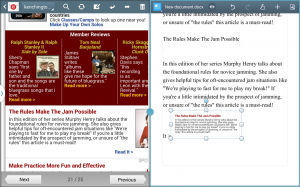
Another feature that enhances productivity is the ability to display two apps side by side in a split screen format. A long-press of the back button reveals a floating interface that allows the screen to be split into two panes with different apps on each side. It works well on the Note 10.1’s impressive screen, and results in two windows that are each a little smaller than an iPad mini when split evenly down the middle.
Highlighted text can be dragged from one window into the other. Once a useful combination is configured, it can be saved as a preset for quick recall in the future. Being able to view a video, email or PDF in one window, and a word processor in another is very handy. Unfortunately, not all apps can be put into the separate windows. About half of my installed word processors and PDF readers are not compatible with the split screen function.
[/fourcol_three] [fourcol_one_last]
Specs
Screen: 2560 x 1600 pixels, 10.1 inches (~299 ppi) Processor: 8x Core (4x 1.9GHz + 4×1.3GHz) Memory: 3GB RAM Storage: 16/32/64 GB internal + microSD up to 64 GB Battery: 8,220mAh (~9 hours Wi-Fi, ~10 hours video, ~122 hours video) OS: Android 4.3 (Jelly Bean)
Price
As reviewed: $599 for Wi-Fi only version (specs as above). Best price: $549 on kogan.com for the LTE version (slightly higher specs) [/fourcol_one_last] [divider]
Should you buy it?
The 2014 Note 10.1 is now more useful than my laptop at university, but until I discovered LectureNotes I was disappointed with it. My laptop is far more useful at home however, allowing audio, video, image and spreadsheet editing, as well as easier formatting of documents.
If I had to choose between the Note 10.1 and a ~$549 laptop and I owned neither, I would choose the laptop. If the choice was between the Note 10.1 and any other tablet, I would choose the Note in a heartbeat.
I believe the Note 10.1 represents a technological sweet spot and will be a worthwhile device for many years. The 2014 edition was a major improvement over the first Note 10.1, addressing a number of complaints people had about the original. I anticipate the third Note 10.1 will be an incremental upgrade, boasting small increases in already strong numbers like processor power and memory, but offering no significant improvements in functionality. That is what happened with the Galaxy Note phones, which saw a big improvement from Note 1 to Note 2, but only a small improvement to Note 3.
As the device ages and the next release draws nearer, the price will continue to drop and the 2014 edition will represent even more of a bargain. Top end tablets like the Note have far more processing power than most people need, despite what manufacturers and marketers would like you to believe. Users who like customising and experimenting with their devices will enjoy the additional functionality, but those who enjoy a simple experience will probably not see those benefits. The technical specs are excellent, and it is a top tablet on its own right, but without the increased functionality it would be harder to justify moving away from the market dominating iPad Air.
Words and images: Tom Kenchington



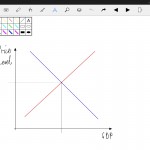
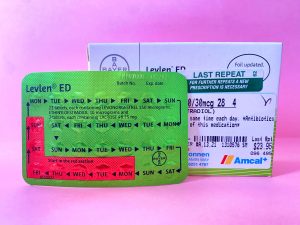

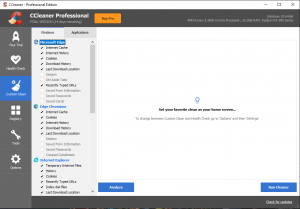

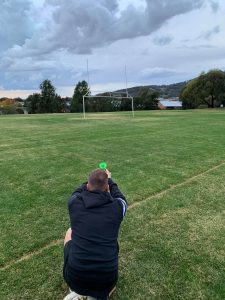
Be the first to comment!